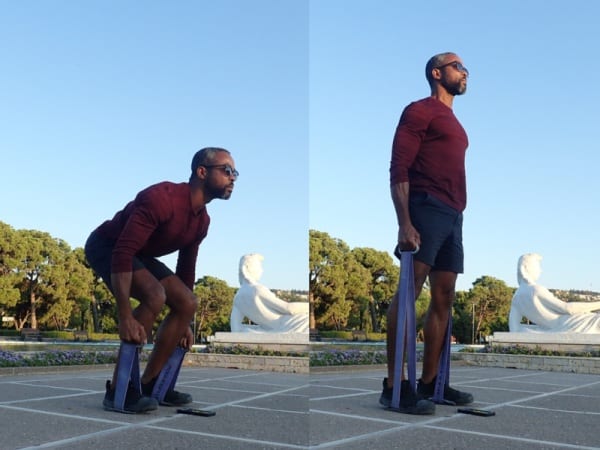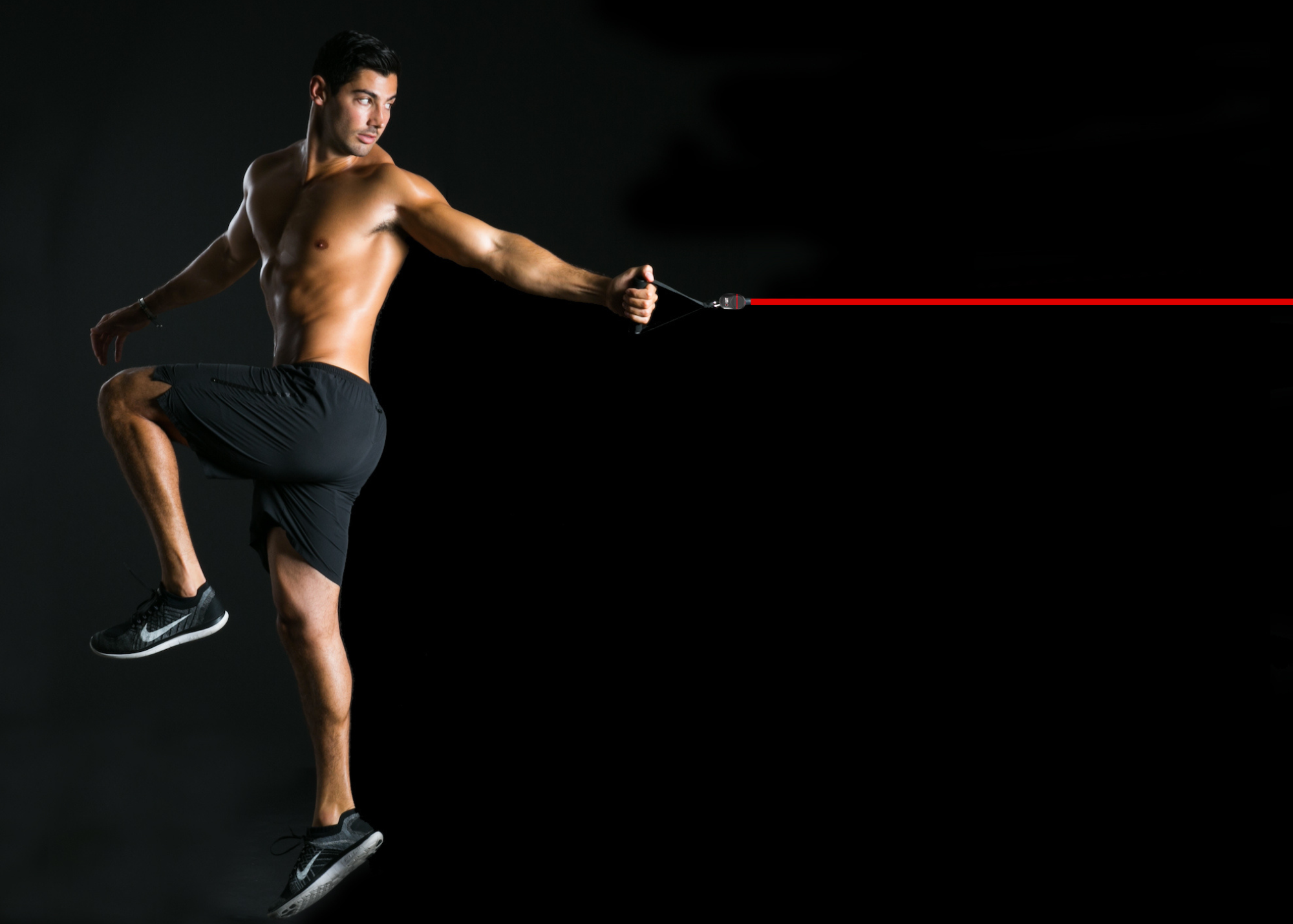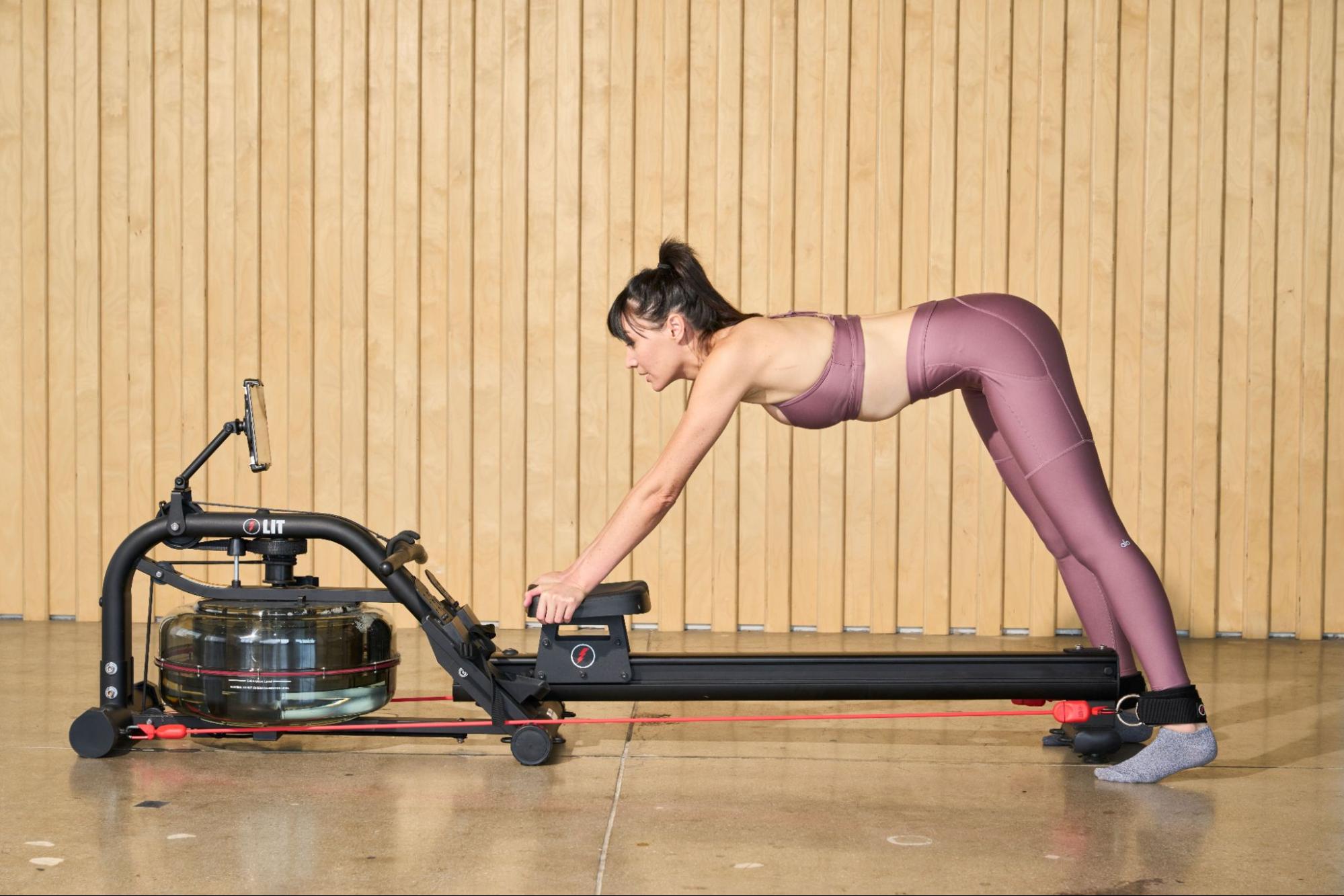Resistance bands are much more versatile than free weights. Resistance bands can be used for any type of workout such as strength training, Pilates, Cardio, Core, and more.
Then why is it that most people overlook the importance of resistance bands as a piece of fitness equipment?
Because unlike other home exercise equipment like treadmills, spin bikes, jump ropes, and stair-climbers that are straightforward, there is a misconception that resistance bands can only offer little resistance and a couple exercises. This is actually not the case.
Given the versatility and variations of these bands, we have put together this guide on how to properly use resistance bands to maximize the efficiency of your workouts.
Choosing resistance bands
Resistance bands offer variable resistance to engage your muscles entirely throughout your workout.
The thicker resistance band equals a heavier resistance. The unique part about resistance bands is they offer more than one specific weight within the band, called variable resistance. Which means, the further you walk away from the band the heavier the weight gets.
How to choose resistance band weight?
We recommend that beginners should start with a lower strength of resistance band such as 10-15lbs to get used to the resistance and build strength. But if you are familiar with strength training, you can move into a heavier resistance 30lb+ to intensify your workout.
How to use resistance bands?
To determine how to use resistance bands and which resistance is suitable for you, try to do various exercises with the resistance band to find out which one you can perform the full exercise. For example, if you perform a bicep curl, you should be able to completely contract your arm and hold it in a steady position. If the band's resistance is too much for you to control and your arm is getting pulled back, the band is too heavy for you.
Once you determine the appropriate resistance, you can start with ten repetitions. As you build strength, you can increase to 15 repetitions. Similarly, as exercise repetitions become more manageable, they gradually increase to the next resistance level. It would help if you remembered that your lower body would gain strength faster than the upper body because the leg and glute muscles are more prominent and stronger.
This is how to correctly use resistance bands at home to gain muscles and build strength. Depending on your workout goals, you can choose between different exercises.
Six resistance band exercises for a full-body workout
1. Opposition jacks
:max_bytes(150000):strip_icc():format(webp)/5.-opposition-jacks-420x420_0-677e90d5ae9f46adbd12428a451858e5.jpg)
Source- shape.com
Stand with your feet together, holding onto the folded resistance band. Extend your arms to the sides, pulling the resistance band as far apart as possible. Squeeze your shoulder blades together when you draw the band towards the chest. It is an excellent workout for the chest.
You can also do a modified version of opposition jacks exercise as given in this video.
2. Resisted boxer

Source- evolve-mma.com
To work out your biceps, anchor the band securely and stand facing away from it. While avoiding the handles and elbows bent by the sides, step right foot forward and extend the left arm out, mimicking the motion of a forward punch.
3. Press back
Standing with your feet apart, face the anchor and hold the handles with arms extended down by sides. Lower into a deep squat and press arms back by hips keeping palms facing backward. This will work out muscles in your back.
Here is a video explaining how to do press back.
4. Resistance band deadlift

Source- abrotherabroad.com
It is possible to perform the deadlift with resistance bands. With the band tied in a loop, stand on the band with feet hip-width apart. Hold onto the other side of the loop with both hands, and bend your knees slightly to bring your chest almost parallel to the floor. Keep your back straight and your abs tight. It would help if you felt a slight stretch in your hamstrings when doing this exercise.
5. Squat

Standing on the band with feet hip-width apart, hold the other end of the band with your hand, your elbow bent, and your palm facing the front of your shoulder. Engage your core, hinge hips, and bend the knees while lowering into a squat position. This exercise is a full-body workout; you must do 10 to 15 reps with enough resistance.
6. Resistance row

Source- courtneymedicalgroupaz.com
Stand at the center of the resistance band and cross the ends of the band to create an X. Hinge your upper body forward and grab either end of the band or handle. Pull your elbows out and back, keeping your hands low and together, squeezing your shoulder blades together.
Here is a detailed guide on how to do resistance band rows.
How To Choose Resistance Bands Based on Exercise Type
Along with knowing how to use resistance bands, it is also important that you choose a resistance band based on the type of exercises that you perform. Following are the types of resistance bands to choose from.
1. Loop resistance bands

Loop resistance bands are also known as power bands. These bands are made of a single, looped piece of lightweight rubber latex, and their resistance can vary from 5 pounds to 175 pounds. Loop bands are great for bodybuilding, improving athletic performance, and physical therapy. For exercising the small muscle groups in calves, ankles, thighs, and knees, you can use the mini version of these bands as they fit securely in these areas. The resistance strength of these mini versions ranges from 5 pounds to 50 pounds.
2. Tube resistance bands

Tube resistance bands are the most widely available type made from harder rubber with handles on each end. They are most suitable for beginners as they provide more control over exercises. The handles provide a better grip, easily control the band's movement, and can support resistance load up to 180 pounds.
If you are looking for tube resistance band exercises than check out this resistance tube band exercises article created LIT Fitness Trainers.
3. Therapy bands

4. LIT Axis smart resistance band

The LIT Axis smart resistance band is an improvement to the traditional resistance band. It combines with technology to create the world's most compact smart gym.
LIT Axis does not require any cord, allowing you to transform any available space into your home gym. It connects with the LIT App on your phone to provide on-screen metrics, including reps, resistance loads, time under tension, and muscle imbalance detection.
~[[lit-axis-cherry]]
This resistance band takes your workout to the next level allowing you to perform cardio, Pilates, strength training, recovery, or any other type of workout in your routine.

Benefits of using resistance bands
✔️ Give benefits similar to free weights: Resistance bands provide a similar level of resistance as free weights, allowing you to gain similar benefits.
✔️ Works on both concentric and eccentric motion: The bands force you to work harder not only during the shortening of muscles but also when they lengthen, providing more comprehensive muscle exercise.
✔️ Work muscles in both directions: Resistance bands allow you to exercise your muscles in both directions, which is not possible with free weights.
✔️ Keep muscles under tension for a longer time: The bands keep your muscles under tension for a more extended time as you move through the full range of motion, increasing muscle function and strength.
✔️ Improve overall function and strength of muscles: Resistance band exercises help improve your muscles' overall function and strength.
✔️ Increase caloric burn: Resistance band exercises can increase metabolism, leading to a more significant caloric burn.
✔️ Can make an exercise easier or harder: Resistance bands can be used to modify an exercise's difficulty level.
✔️ Fix your motion and posture: Resistance bands can help beginners perfect their motion and posture, leading to better exercise form.
✔️ Correct your hip-hinge mechanism: Resistance bands can teach the proper hip-hinge mechanism required for deadlifts and pull-ups.
✔️ Master your technique of bodyweight exercises: Resistance bands can help you master the technique of bodyweight exercises such as chin-ups and pull-ups.
✔️ Helps to make your movement more manageable: Bands assist you in getting stronger while maintaining a full range of motion to ensure proper squeezing and muscle recruitment during the training. As the movement gets more manageable, you can gradually decrease the band's assistance until you can perform the exercise without support.
Conclusion
We hope this resistance band how-to-use guide is enough to get you started. Resistance bands are incredibly versatile gym equipment that allows you to perform a full-body workout at home. With affordable, easy-to-store, and portable resistance bands, you'll never miss out on your training anywhere, anytime. Ultimately, the results depend on how you use resistance bands, but you definitely will get results.




